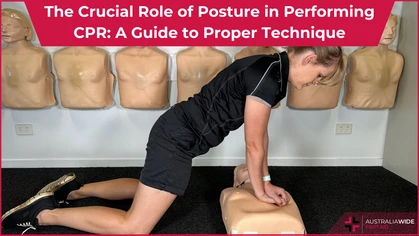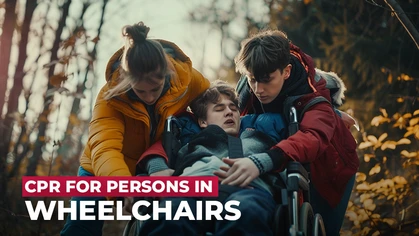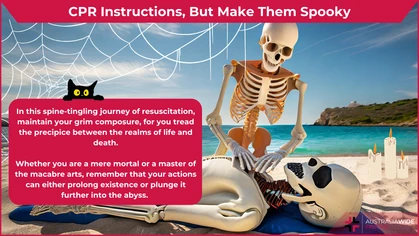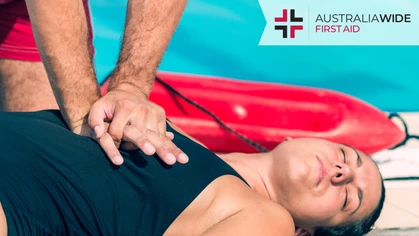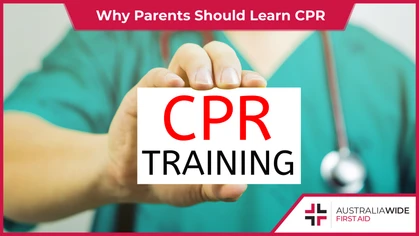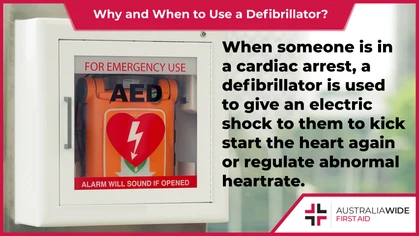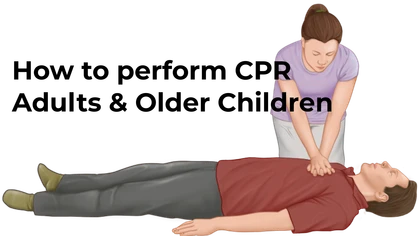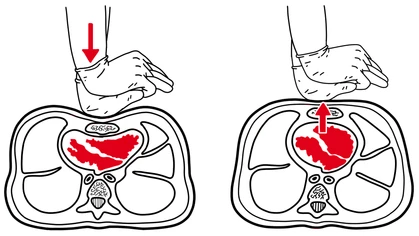How to perform CPR - Infants (0-12 months)

CPR Resources
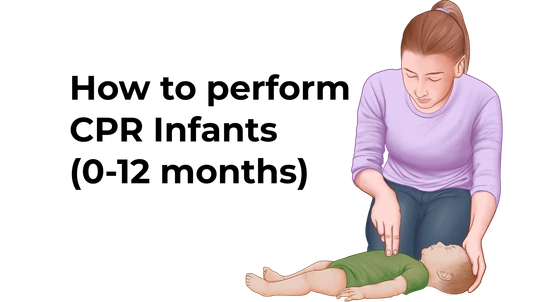
How to perform CPR on infants
If you’re in an emergency, call 000. Performing CPR on an infant (< 12 months old) is shown in the guide below. You can also see other guides on CPR for children (1-8 years), adults & older children (over 8 years) and during pregnancy. Please note, the information below is not a substitute for first aid trainingHow to determine if CPR is necessary
The DRSABCD action plan is a structured way of assisting a casualty. It includes vital steps such as assessing for danger, checking for a response, sending for help, clearing and opening the airway, and checking for breathing. The Basic Life Support chart below shows all the critical steps leading up to performing cardiopulmonary resuscitation (CPR).
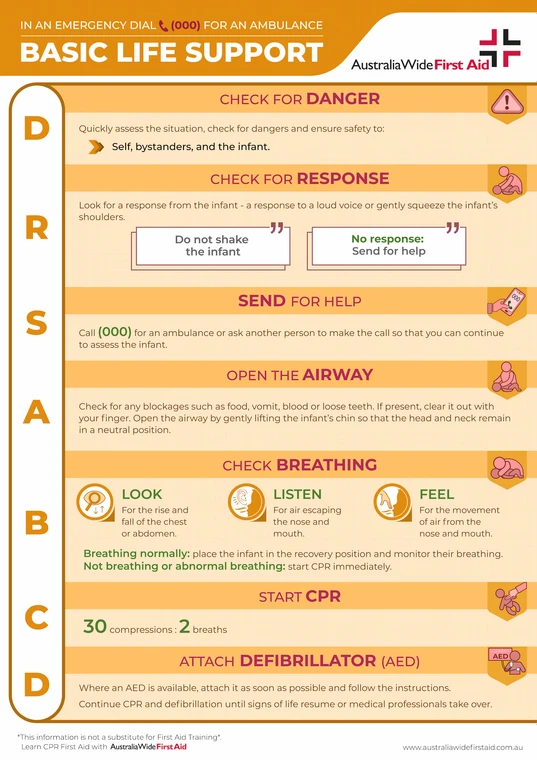
Step-by-step guide
After having followed the DRSABCD plan, follow the steps below. CPR is performed at a ratio of 30:2 (30 chest compressions + 2 rescue breaths).Looking to get you First Aid knowledge up to date?
We run certified First Aid courses throughout all major Acustralian citys. Find a location near you.
Chest compressions
1. Place the infant on their back on a firm surface. Kneel or stand beside them. 2. Place two fingers on the lower half of their sternum. Use your other hand to gently hold their head in place.
Rescue breaths (mouth-to-mouth)
After the 30 compressions, give 2 rescue breaths. 1. Lift the infant’s chin very slightly whilst gently holding their head in a neutral position. Do not tilt the infant’s head backwards.

- The infant is positioned properly.
- The airway is not obstructed by a foreign body - if it is - remove it.
- A tight seal is maintained over the infant’s mouth and nose.
Using an AED
Where an AED is available, turn it on and attach pads or have a bystander attach them so you can continue doing compressions. Follow the AED’s instructions. An AED will analyse heart rhythm every 2 minutes. It may or may not give a shock. Continue to give CPR in between each analysis cycle. Find out more about using an AED.
- the infant responds or resumes breathing normally
- it is impossible to continue e.g. due to exhaustion
- a health care professional takes over or directs that CPR be ceased (don't stop until they tell you)
- it is too dangerous to continue

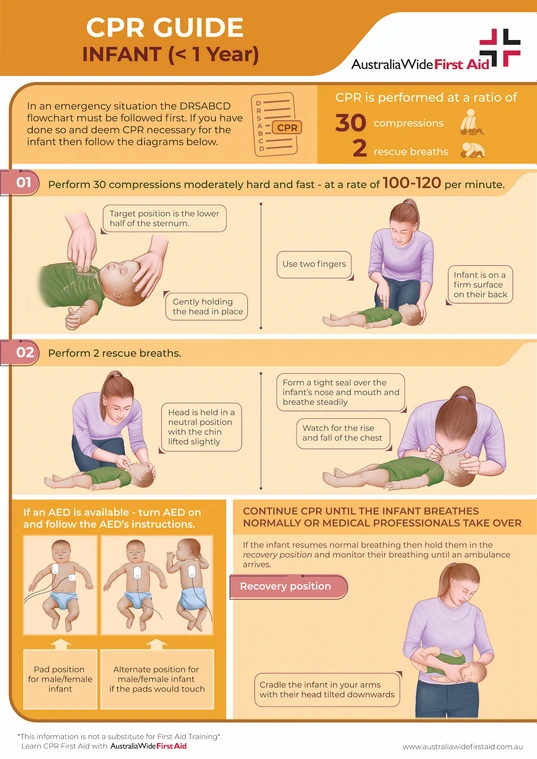
Other CPR Resources
- How to perform CPR - Children
- How to perform CPR - Adults & Older Children
- How to perform CPR - Pregnancy
Originally published at
https://www.australiawidefirstaid.com.au/resources/cpr-guide-infants
as part of the Australia Wide First Aid Articles Library
